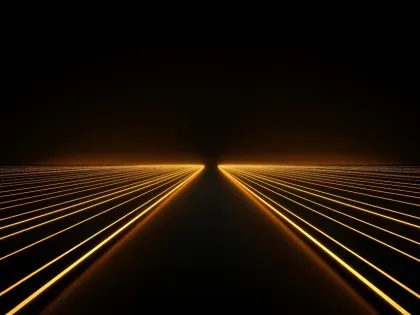How to Mitigate Supply Chain Attacks


Cybercriminals are sneaky. They know that the weakest link in an organization’s cyber defenses is its supply chain. In fact, supply chain attacks are now the avenue of choice for hackers.
Consider the facts:
- 62% of network intrusions originate with a third-party
- 73% of organizations have experienced at least one significant disruption from a third-party in the last three years
What is a supply chain attack?
A supply chain attack is a type of cyberattack that exploits vulnerabilities in an organization’s supply chain. In most cases, these vulnerabilities are caused by vendors with poor security postures.
These vendors often have access to sensitive systems and data, such as cloud service providers. In this interconnected ecosystem, it is not unusual for a single exploit of a vendor's digital infrastructure to ripple across the entire supply chain and impact hundreds of thousands of downstream customers. This is why supply chain attacks are so successful and efficient.
Examples of these attacks are plentiful, including SolarWinds, Target, Home Depot, and NotPetya incidents.
How to mitigate supply chain attacks
The risk of supply chain attacks can be reduced by understanding your expanding attack surface and using tools and best practices to reduce exposure.
Let’s look at five ways you can prevent and mitigate supply chain attacks.
1. Identify cyber risk during the onboarding phase
Before your organization enters into a contract with a vendor, you must identify the cyber risk they pose. Typically, this is achieved using security questionnaires or assessments which can provide context about your vendors’ security controls and risk management practices.
But they only provide a snapshot of risk. As your vendors digitally transform, add new partners, and outsource functions, cyber risk is constantly emerging. Assessments are also subjective and require you to take your vendors at their word.
Questionnaires are important, but it’s critical that you validate them with objective, data-driven insights into cyber risk. For instance, with Bitsight Third-Party Risk Management (TPRM) you can gain near real-time visibility into a vendor’s security posture based on objective data about vulnerabilities in their networks, previous cyber incidents, and even risky fourth-party connections.
2. Scale vendor risk management with automation
With more suppliers entering the digital supply chain and a rise in supply chain attacks, it’s essential that you find a way to automate and reduce manual and repetitive vendor risk management (VRM) tasks.
Utilizing a fully integrated solution such as Bitsight Vendor Risk Management allows you to work smarter, not harder.
Bitsight VRM combines workflow automation and objective data to evaluate vendors so you can manage your expanding vendor ecosystem with confidence. With Bitsight VRM, you can:
- Reduce the need for email follow-up, spreadsheets, and calendar reminders by automating the assessment process.
- Prioritize critical and high-risk vendor assessments with customized workflows.
- Analyze your vendors' alignment with security certifications, cybersecurity frameworks, and regulations using custom security questionnaires.
Read more about how Bitsight can help you build a scalable VRM program.
3. Continuously monitor supply chain risks
External attack surface management (EASM) doesn’t begin and end with onboarding. Threats are always evolving; so are your vendors’ risk profiles. Keeping a pulse on these profiles throughout the life of the relationship is vital.
Achieving that goal does not require frequent and time-consuming security audits. With Bitsght TPRM, you can continuously and automatically monitor the cyber health of your vendors. An easy-to-use dashboard displays each vendor's risk profile. In addition, you'll receive notifications when new vulnerabilities are detected – such as a misconfigured system or unpatched software – or when vendor risk posture drops below pre-agreed thresholds or contractual levels.
With automated insights that are updated daily and dashboard views, you can prioritize risk according to several factors:
- Vulnerability severity.
- The number of vendors in your portfolio who are exposed.
- Confirmation details of a specific vendor’s exposure (such as evidence of a publicly disclosed vulnerability or Common Vulnerability or Exposure – CVE – on their network).
These insights will enable you to respond more quickly and precisely to security incidents.
4. Share your findings with vendors
Staying secure is too big of a job for it to be the responsibility of a single company. It takes communication, collaboration, and the open exchange of information. Thus, you need to work collaboratively with your vendors to keep systems and data safe from cyber threats.
For instance, with Bitsight’s Enable Vendor Access for TPRM, you can share your findings into critical vulnerabilities in the supply chain with your vendors so they can understand hidden risks in their network. With this feature, your vendors can monitor their security ratings, discover vulnerabilities, and get actionable recommendations for strengthening their network security.
5. Report on supply chain risk for effective assurance
Managing supply chain risk effectively requires all members of your organization to be on the same page about how well you are prepared to defend yourself from supply chain attacks. This includes your board of directors.
However, board members aren't always familiar with the technical metrics and language CISOs use. They need easy-to-digest metrics that demonstrate that your third parties’ security controls are being managed effectively. With Bitsight TPRM, you can quickly and easily generate reports that show vendor security performance and trends across your portfolio – even a predictive view of the likelihood of a vendor breach.
Read our practical guide to risk-based cybersecurity reporting.
A proven way to mitigate supply chain attacks
As supply chain hacks increase, mitigating these threats comes down to visibility and accountability. Monitoring every link in the supply chain is essential – continuously, efficiently, and at scale. You can then use those data-driven insights to help your vendors proactively manage their own cyber risks.
Bitsight can help you monitor vendor security performance, measure security controls, mitigate supply chain risk, and report effectively to drive confidence in your TPRM program.


